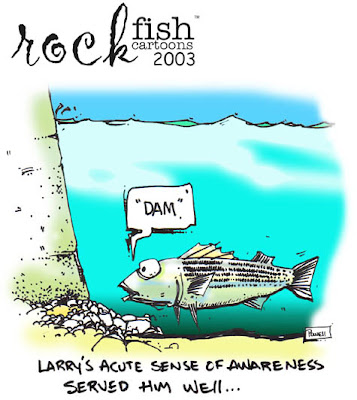 |
| Watersheds with 10 or more at-risk fish and mussel species are concentrated in the Southeast, reflecting the extraordinary species diversity of rivers and streams in this region. (Rivers of Life) |
The dynamic physiographic provinces spanning the Southeastern United States, comprised of mountains, piedmont, and coastal plains, combined with the historic absence of ice sheets and glaciers, created incredibly diverse aquatic ecosystems and species. Altered and fragmented habitats, invasive species, overharvest, disease, and pollution are threatening that diversity, putting aquatic ecosystems at risk.
A petition to the United States Fish and Wildlife Service (USFWS) was made by The Center of Biological Diversity in April of 2010 to list 404 aquatic, riparian, and wetland species from the Southeastern United States as threatened or endangered under the Endangered Species Act. This petition was a result of a 1994 USFWS request favoring multi-species listings that are appropriate when several species have common threats, habitat, distribution, landowners, or features that would group the species and provide more efficient listing and subsequent recovery.
 |
In September 2011, the USFWS found that protection of 374 of the 404 may be warranted and will conduct an in-depth status review of each species. Eighteen of the remaining 30 species were already listed as candidates for protection, and the final 12 species were fish that did not have substantial scientific or commercial information to move forward.
The 374 species being considered include 89 species of crayfish and other crustaceans, 81 plants, 78 mollusks, 51 insects, 43 fish, 13 amphibians, 12 reptiles, 4 mammals and 3 birds, and are found in 12 states: Alabama, Arkansas, Florida, Georgia, Kentucky, Louisiana, Mississippi, North Carolina, South Carolina, Tennessee, Virginia and West Virginia. With just over 800 described freshwater fish species in the United States, the 43 included fish species represent 5% of that total, indicating the strong implications of this petition and review for fisheries research. Yet, the Association for Biodiversity further suggests an additional 250 freshwater fish species at risk, demonstrating the need for further attention in other regions.
Those in the scientific community with expertise concerning the status of a species under review are asked to submit information in regards to:
The species’ biology, range, and population trends, including:
(a) Habitat requirements for feeding, breeding, and sheltering;
(b) Genetics and taxonomy;
(c) Historical and current range, including distribution patterns;
(d) Historical and current population levels, and current and projected trends;
and
(e) Past and ongoing conservation measures for the species, its habitat, or both.
List of 43 fish species:
Northern cavefish (Amblyopsis spelaea),
bluestripe shiner (Cyprinella callitaenia),
Altamaha shiner (Cyprinella xaenura),
Carolina pygmy sunfish (Elassoma boehlkei),
Ozark chub (Erimystax harryi),
Warrior darter (Etheostoma bellator),
holiday darter (Etheostoma brevirostrum),
ashy darter (Etheostoma cinereum),
Barrens darter (Etheostoma forbesi),
smallscale darter (Etheostoma microlepidum),
candy darter (Etheostoma osburni),
paleback darter (Etheostoma pallididorsum),
egg-mimic darter (Etheostoma pseudovulatum),
striated darter (Etheostoma striatulum),
Shawnee darter (Etheostoma tecumsehi),
Tippecanoe darter (Etheostoma tippecanoe),
trispot darter (Etheostoma trisella),
Tuscumbia darter (Etheostoma tuscumbia),
Barrens topminnow (Fundulus julisia),
robust redhorse (Moxostoma robustum),
popeye shiner (Notropis ariommus),
Ozark shiner (Notropis ozarcanus),
peppered shiner (Notropis perpallidus),
rocky shiner (Notropis suttkusi),
saddled madtom (Noturus fasciatus),
Carolina madtom (Noturus furiosus),
orangefin madtom (Noturus gilberti),
piebald madtom (Noturus gladiator),
Ouachita madtom (Noturus lachneri),
frecklebelly madtom (Noturus munitus),
Caddo madtom (Noturus taylori),
Chesapeake logperch (Percina bimaculata),
coal darter (Percina brevicauda),
Halloween darter (Percina crypta),
bluestripe darter (Percina cymatotaenia),
bridled darter (Percina kusha),
longhead darter (Percina macrocephala),
longnose darter (Percina nasuta),
 |
| Broadstripe shiner |
bankhead darter (Percina sipsi),
sickle darter (Percina williamsi),
broadstripe shiner (Pteronotropis euryzonus),
bluehead shiner (Pteronotropis hubbsi), and
blackfin sucker (Thoburnia atripinnis)
-Patrick Cooney
Further reading:
-Patrick Cooney
Further reading:
(Fish pictures from fishbase.org)






































